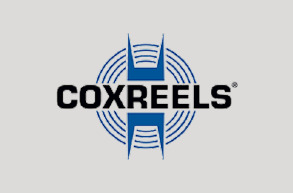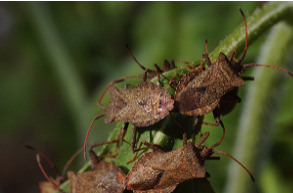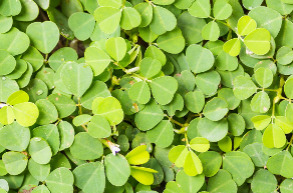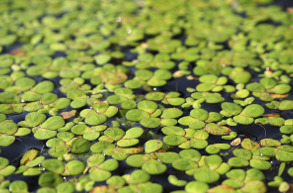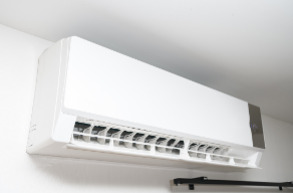Creeping Signalgrass Control
Most Effective Products
Creeping Signalgrass Control: How To Get Rid of Creeping Signalgrass
Creeping Signalgrass (Brachiaria platyphylla – syn. Urochloa platyphylla) is a warm-season weed that often emerges in ditches, disturbed areas and fields. It looks very similar to Large Crabgrass but is actually a species of its own.
Creeping Signalgrass weeds primarily a problem in agricultural areas, especially where corn is being grown and can significantly reduce yields. On a residential lawn, Creeping Signalgrass tends to spread very quickly and can overtake a lawn with their presence.
If you want to remove Creeping Signalgrass from your property, our easy DIY treatment guide will show you exactly how to eliminate this grassy weed permanently. Follow the step-by-step instructions below using the recommended herbicides to the right and you will be successful in removing Creeping Signalgrass for good.
Identification
Creeping Signalgrass is often mistaken for Crabgrass which is understandable because they do share similar traits, however, Creeping Signalgrass is a little darker green in color and has a much more coarse texture to it. Leaves are smooth, flat, and wide. Their seedhead branches spread like "signal flags" with seeds on the underside, which is how they earned their name.
Another way to differentiate between Creeping Signalgrass and Crabgrass is to check for the presence of a membranous ligule (this is a tongue-like structure found between the leaf and the stem). Crabgrass has membranous ligules while Creeping Signalgrass has hairy ligules. Another way to tell the difference is to check for hairs on the leaf surface, which Crabgrass has while Creeping Signalgrass doesn't.
Use the above description and image provided to help you identify creeping Signalgrass on your lawn. When you're unsure or can't quite pinpoint exactly which kind of weed you are encountering in your yard, turn to the experts to ID the weed for you.
Inspection

Where to Inspect
Creeping Signalgrass may be pretty easy to detect due to its growth habit. It will stand out amongst your desired grasses with it's creeping, prostrate growth. What you're going to want to determine in this step is how severe of a problem you have and what areas they are concentrated in so you know where to focus your chemical treatment.
What To Look For
Creeping Signalgrass will have Crabgrass-like features but with a hairy stem and hairless leaf surface. Younger Creeping Signalgrass blades will have a maroon tinge on the blades.
Treatment
Please be sure that when handling any type of herbicide, you are properly protecting your skin and eyes with safety equipment (Goggles, gloves and long-sleeved clothing)
We recommend using a pre-emergent herbicide early in the spring to prevent the weed from establishing itself on the lawn. However, if Signalgrass is already established on your lawn then post-emergent herbicide will be necessary.
Step 1 - Spot Treat With Ferti-Lome Weed Out with Crabgrass Killer

Ferti-Lome Weed Out with Crabgrass Killer is a liquid product that seeps into the roots of creeping signalgrass eliminating it within 21 days.
Measure the square footage of the treatment area to determine how much Ferti-Lome Weed Out with Crabgrass Killer you need. For spot treatments, 2.5 oz. of Ferti-Lome Weed Out with Crabgrass Killer in a gallon of water per 400 sq. ft. For a broadcast application, mix 6.4 oz. of product per gallon of water per 1,000 sq. ft.
Add half of the appropriate amount of water, then fill with the appropriate amount of Ferti-Lome Weed Out with Crabgrass Killer, and then add in the remaining half of water. Secure the lid and agitate until evenly mixed together.
With a fan tip nozzle, spray the Creeping Signalgrass to ensure it is evenly coated. You may need to do repeat applications after 21 days if the weed is particularly persistent and problematic.
Prevention

Creeping Signalgrass will take a bit of persistence in order to completely get rid of it but if you do manage to be successful in removing it, you don't want it to return. Prevent Creeping Signalgrass from growing with the help of a pre-emergent. This will prevent the surviving Creeping Signalgrass seeds from growing when spring arrives. Timing is key, however, if you want pre-emergent to make a difference.
Barricade contains Prodiamine, a highly effective active ingredient that controls and prevents seeds from sprouting. Depending on your turfgrass type, Barricade can be applied at a rate from 1.5 pounds to 4 pounds per 1,000 sq. ft. (read the label to find the proper rate for your turf type). Measure the square footage of your lawn to determine how much Barricade you will need.
Once you have measured the appropriate amount based on your calculations, load the Barricade granules at the right calibration setting into a hand or push spreader and then apply the granules until your lawn is covered evenly to get a uniform application. A push spreader is preferred if you have a large property to spread the granules on while a hand spreader, like the Plantmates Scatterox, is better for more precision and control over where you want to spread the granules. After broadcasting the granules, you should then water in and activate them with at least 0.5 inches of water.
Aside from this, your best defense is a thick, nutrient-rich turf that will choke out creeping Signalgrass and block seeds from receiving sunlight. Mow at a height grass height between 3 to 4 inches. Water less frequently but more deeply and fertilize properly and at the right times for your lawn.
Key Takeaways
- Creeping Signalgrass is a warm-season perennial grass which grows vigorously from May to October.
- We recommend using either a pre-emergent like Barricade or if it has already emerged Ferti-Lome Weed Out with Crabgrass Killer to control Creeping Signalgrass.
- Prevent the reappearance of Creeping Signalgrass by applying pre-emergent in the fall and maintenance practices (like mowing) that promote a healthy, nutrient-rich turf that will make it hard for the weed to establish.






















































